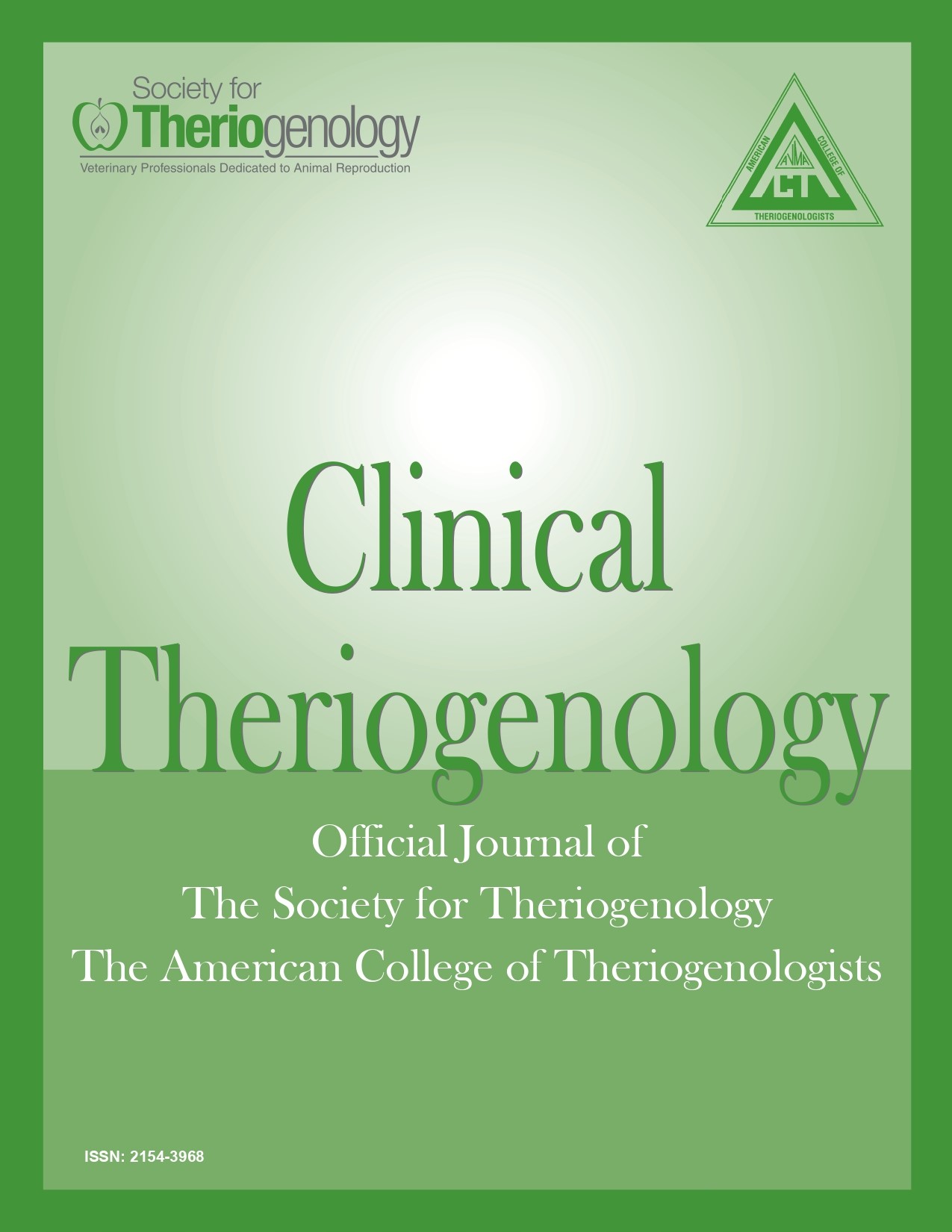X chromosomal monosomy with bilateral ovotestes in a Labrador Retriever dog
Abstract
A 2 year intact, phenotypically female Labrador Retriever dog was presented for evaluation of persistent white vaginal discharge after a perceived normal estrous cycle. On repeat evaluations, the dog was determined to be in persistent cytologic estrus ~ for 2 months. Abdominal ultrasonography revealed suspected bilateral ovarian cysts and cystic endometrial hyperplasia. After ultrasound-guided cystic aspiration, the dog was treated with a 3 day course of gonadotropin-releasing hormone (GnRH). Four months after initial treatment, the dog developed behavioral and physical signs of estrus that lasted ~ for 4 weeks; systemic progesterone concentrations never increased > 1.0 ng/ml. Repeat abdominal ultrasonography revealed another cyst-like structure on the right gonad. Similar treatment (cyst aspiration and GnRH treatment) was given. Paired cystic fluid and blood serum hormone concentrations were analyzed at each aspiration; testosterone concentrations were higher in serum and cystic fluid. Ovariohysterectomy and karyotyping diagnoses were bilateral ovotestis and X chromosomal monosomy (77, XO).
Downloads
References

This work is licensed under a Creative Commons Attribution-NonCommercial 4.0 International License.
Authors retain copyright of their work, with first publication rights granted to Clinical Theriogenology. Read more about copyright and licensing here.





